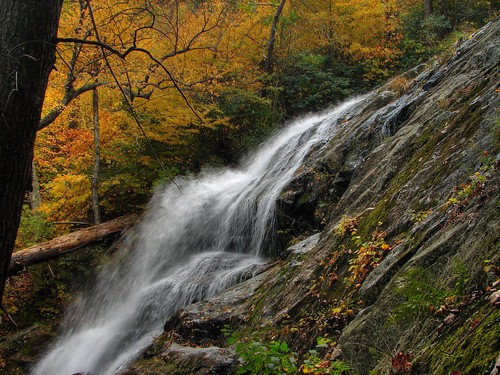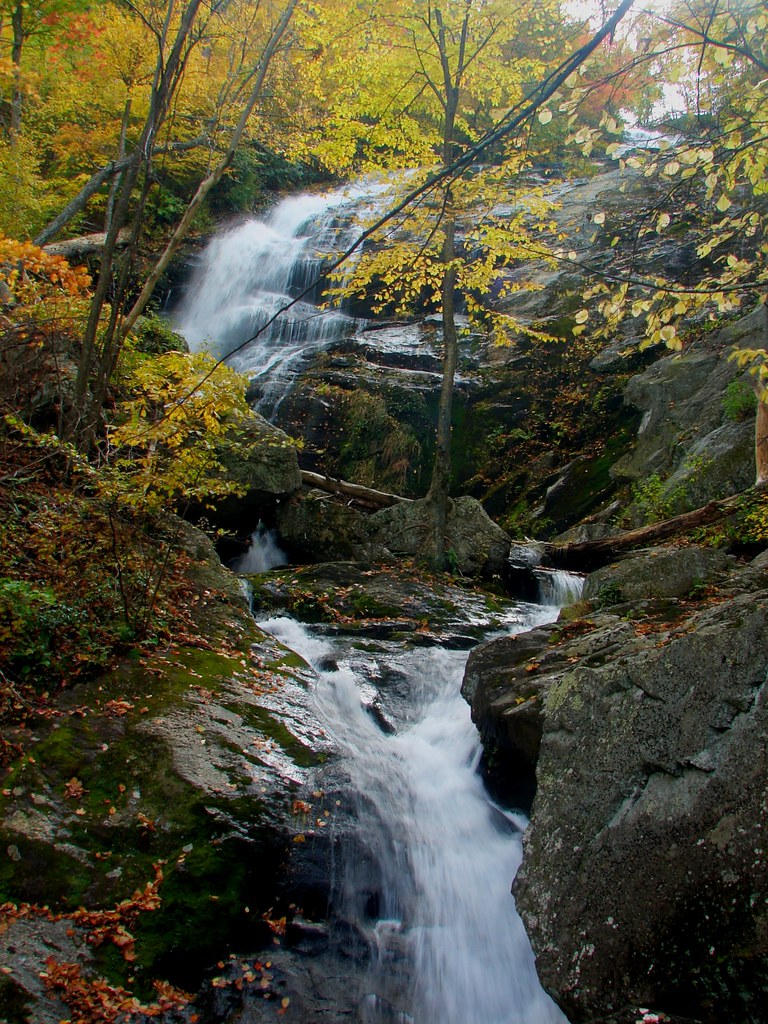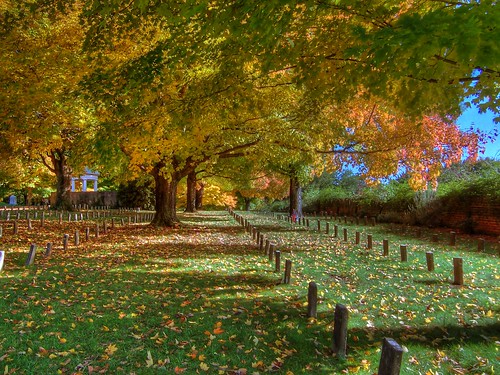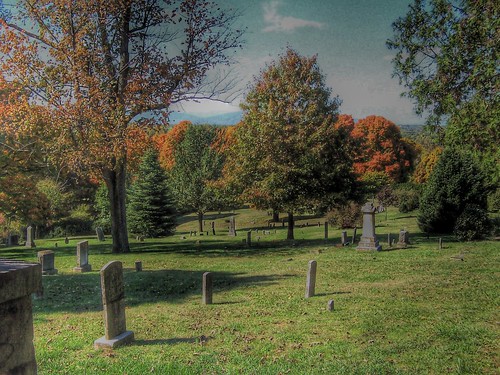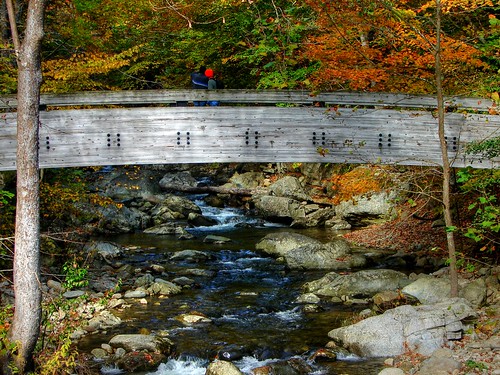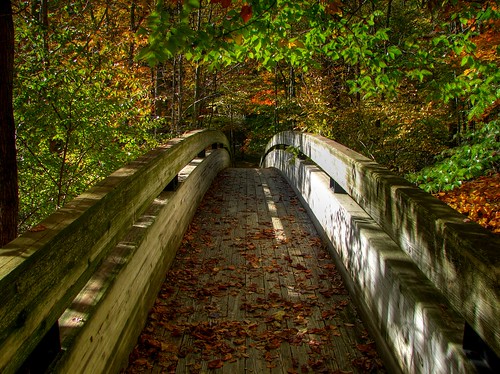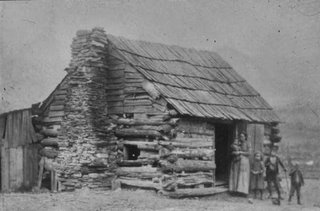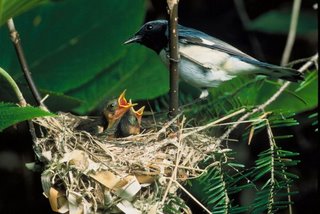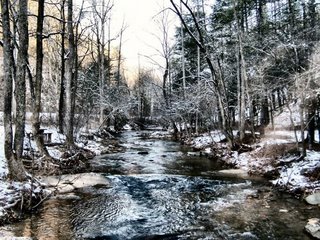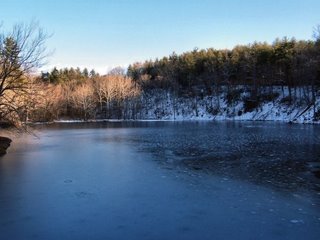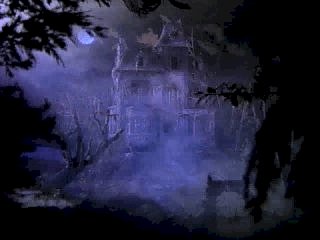 In honor of October and HalloweenG-L
In honor of October and HalloweenG-LAll of the following places require permission to enter, so if you are thinking about visiting them keep that in mind.
George Washington National Forest - Braley's Pond area; go to the picnic area. From time to time a spirit hovers over the small run that flows next to the campsites. also if you hike around the pond and stay on the rugged trail that leads up the mountain, about a half mile or so up the trail I heard the sound of a horse walking and neighing also children's voices were heard.
Gloucester - Roswell Plantation - The Page Family Mansion built in the early 1600's. Several generations lived in the mansion before it burned down. Several walls are still standing from the 4-story building. The graveyard for the family is off to the side of the house, as part of the extensive grounds. Many occurrences have been reported; the drop in air temperature by a good 15 degrees or more, apparitions, strange noises, the sound of slaves coming from the fields, reportedly a young woman walks down the front steps every night.
Graham’s Forge - Major Graham’s Mansion - Owned by a slave owner, he tortured and killed many of his slaves. He burned down a slave house with over 100 men, women, and children inside. Coming close to the house, you get the sensation of pain and anger. Lights turn on and off, even though there are no electrical cables. Curtains move. You can here someone going up and down the stairs. Bloody handprints sometimes stain the basement, which is where cages are and where slaves were kept and tortured. There is a guillotine there also. If you stay too long, you will start to here voices, screaming, babies crying, and lots of yelling. Be careful; Many who enter this house say they always bring out something with them.
Grundy - Vansant Elementary School - Along the old hall ways, lights flicker without electricity, foot steps are heard by people living around it, and a friendly ghost walks the girls bathroom at night.
Hampton - Blackbeard Point - Blackbeard Point was named after the famous pirate Blackbeard. His head was cut off and stuck on a pole to warn off other pirates. It is said to this day that the decapitated pirate searches for his head in the Chesapeake Bay. People have seen him many times and say you would be stupid to go looking for this hideous pirate.
Hampton - Chamberland Hotel - This hotel is on Fort Monroe. Apparently, when the original hotel burnt down, a young teenage girl went with it by accident. She was looking for her father (who evacuated already). Employees on the seventh floor on where she died claim that they can still hear her banging on the walls, or catch her looking out the window.
Hampton - Fort Monroe - Reports of apparitions of young soldiers walking the top of the fort and around the many rusting offices. Witnesses have felt a cold breeze on a warm sunny day around the turrets and heard voices just out of understanding around these areas.
Hampton - South Hampton - A woman walking in the hallway and then goes away. Lights come on by themselves.
Hampton - Virginia beach - Dam Neck Naval Base - December of 1999, on the Dam Neck Naval Base in the "finger barracks" off of the galley. On the bottom floor of the women’s wing in the open bay showers at around 5 am. There was a sighting of a transparent naked slender woman with dark black straight hair who appeared to have come from a wall and exited through the hallway door. She walked right past the shower stall where an unsuspecting sailor was showering to go on leave.
Harrisonburg - Deer Run- Building A - They have even been herd walking up the steps late at night yelling there death chant.
Harrisonburg - Kiester School - behind the school is a wooded area that is haunted by at least two ghosts the spirits seem to be evil if you go into the woods you get the sensation that you are being watched and at times being followed there is a nature trail built in to the woods and there are two parts where there the trail was being made but never finished. There is a rumor that in the 1960's a man went into the woods (before the nature trail was erected) and was never seen again and no body was ever found!
Harrisonburg - Port Republic Road - Just off Port Republic Road sets General Turner Ashby's grave across the road from Deer Run Apartments, a misty foggy after 12am has been reported.
Haymarket - Haymarket (Beverly) Mill - It is said that a farmer believed his daughter was responsible for giving her mother spoiled meat that killed her so he hung his daughter from a meat hook on the fourth floor of their mill. Her image on the meat hook has been seen frequently. The mill was more recently burnt down and I haven't heard what happens since that.
Haymarket – Log mill - A little white church off Log mill road has said to be haunted. There have been white *blobs* floating are there at night.
Haywood - Angus Mountain - It is said that late at night you can see shadows carrying lamps walking through the woods. It is believed that it is the spirits of Indians from years gone by.
Henry County - Martinsville - Leatherwood - On a particular rd, Barrow's mill rd, in Henry co. there was a house called the "pink house". This house was a rental property some time or another where many families grew up and moved on. The house however has been demolished and there was an incident of a child being hit and run in a blind curve at this site; the child appears in the middle of the curve with no warning and has been seen by numerous people.
Hiawassee - Blue Ridge Scout Reservation - Old Civil War Generals, and soldiers have been seen and heard on the southern side of the reservation. Also the sprits and voices of George Washington and his men have been seen walking through one camp, where in the 1700's an old railroad route used to be.
Hiawassee - Pulaski County Virginia - Old Paint Factory - One night a hunter was walking through the woods with his dogs near the factory. Suddenly a man appeared in front of him. He knew if he let the dogs go they would tear the man to pieces but they were hurting his hand so he had to let them go. He caught up with the dogs after they ran off to find them sniffing the ground as if no one was there. He told a relative of the incident and described the man. He was wearing an old paint factory uniform. There are many apparitions in the hills of Hiawassee.
Honaker - Big A Mountain - A helicopter crash left large chunks of metal from the aircraft and bones in the trees on big a mountain. Local people from the area were first on the scene and one man found a dying victim moaning but he was too late to save the person's life. He returned to the spot years later and said he could still hear the person moaning and felt a cold chill and the smell of death still fills the air around the area where the helicopter crashed.
Honaker - Hoanker High School - Old principal walking down the stairs to the gym basement; People have smelt smoke, and report seeing him.
Honaker - Honaker Hollow - 1.Woman with washboard and tub. The closer you get the more she fades away until she's gone.
2. When a certain old house is stayed in, you can hear something land on the roof or somewhere close-by and without opening doors or windows comes into the house. There can actually be communication with whatever it is.
3. Also hear tales of when my great uncle rode out of the hollow on a horse he felt someone get on behind him and when he tried to feel behind him there was nothing there.
Hopewell - Appomattox Manor - This old house on the river front in Hopewell is known to have been a hold out for Confederate and sometimes Union soldiers during the Civil War, especially the assault on Petersburg nearby. One legend surrounding the house is where a nurse hid a Union soldier in the wall of the basement when the Confederates came to inspect the house. When they found Union paraphernalia in the storage room they arrested the woman and took her away. The Union soldier, unable to help himself escape, died and today can be heard scratching at the walls for someone to be let out. This is a story told by the caretakers of the house. In 1953, when they were rebuilding the basement of the house they found a body of a Union solder behind the walls.
Horsepen - Old Pocahontas Fuel Building - This building is built almost directly over an old mine. The mine below was the site of one of the largest water inundations (they broke through a rock wall into an underground river) killing many by drowning. Their voices call for help at night and sometimes during the day if someone is alone.
Independence - Lover’s Leap - It is said that anyone who passes over this bridge will see the ghost figure of a young girl crying, saying "I love you" or a strapping young man jumping off the bridge. The story goes that the two were romantically involved and their families were at odds. The two would rather die than be kept apart so they jumped off the bridge holding hands and whispering, "I love you."
Jamestown - Amblers' Colonial Mansion - a very angry ghost named Lydia Ambler haunts her former home.
King George County - Lambs Creek Church - off of U.S. route 301 on Lambs creek church road (R.R. 4) there is Lamb's Creek church where two civil war soldiers can be seen resting on a rainy night. This usually happens on rainy nights. Also the church's windows glow from the inside around the 27th of October. There is also a ghost of a young girl who died of pneumonia, a strange blue light and an apparition of the girl running and playing.
Lancaster - Lancaster Tavern- It was established in the 1700's, not sure exactly when, it says on the sign hanging above the door, but there is a very friendly ghost there who every morning makes breakfast. Very early in the morning you can smell bacon cooking when no-one is awake or in the kitchen.
Leesburg - Balls Bluff Battlefield - around the time of the battle at night, soldiers have been seen still trying to climb the bluffs and get across the Potomac River.
Leesburg - Graydon Manor - There is a mental hospital called Graydon Manor. Back in the early 1900's a young woman was sent there for various reasons by her parents. She was forced to leave her lover. She would escape occasionally and meet up with her boyfriend at this gazebo out in the woods. Soon it became too much, she escaped on night in her prettiest dress, met up with her boyfriend and the two of them hung themselves in the gazebo. The girl is said to haunt the woods, the dirt road, and the gazebo occasionally. The gazebo can still be seen off an old dirt road, although it recently got hit from a falling tree.
Lexington - Poor House Road Tunnel - The tunnel was part of an old railroad system that ran from Lexington to Staunton in the early 1900s. Inside the tunnel at night, voices of children are heard whispering "Come on, come on." Misty dark fog gathers around you when standing in the middle of the tunnel.
Lexington - Virginia Military Institute - a painting over the alter has been said to bleed, noises in VMI's catacombs, old cellars under barracks, and sounds of cannon fire near the Jackson Memorial Hall.
Louisa - Owens Creek Rd. Mineral - Historical Red House - The "Mistress of Red House" is said to roams the grounds of this revolutionary war house. A woman in a tan dress, She sometimes stands peering out the windows or up near the driveway entrance. Usually appearing early in the dark morning around 4 am. The house, still standing which and was redone in the 19th century, is a small house with a large yard and a forgotten unkempt graveyard is nearby.
Lynchburg - Randolph - Macon Woman's College- A girl was murdered on campus 25 years ago and it is said that some nights you can hear her running and screaming. Also, is said that the Smith Banquet Hall is haunted by the headless ghost of a Washington and Lee U. student who was on his way here for a dance and got decapitated in a wreck.
Lynchburg - William Bass Elementary School - voices and doors opening and closing are some of the events here.
You can find A—C,
here, and And D—F,
hereImage by D L Ennis
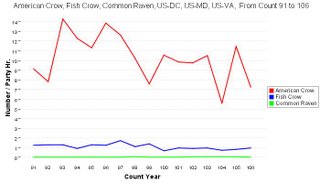 Because of recent worries about West Nile Virus and highly-pathogenic poultry flu in humans, crows again are becoming ominous signs. Only now, it is the dead crows rather than the living ones that are a cause for worry. With both diseases, birds are under a greater threat than humans.
Because of recent worries about West Nile Virus and highly-pathogenic poultry flu in humans, crows again are becoming ominous signs. Only now, it is the dead crows rather than the living ones that are a cause for worry. With both diseases, birds are under a greater threat than humans.



